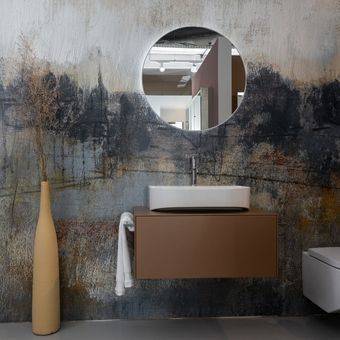
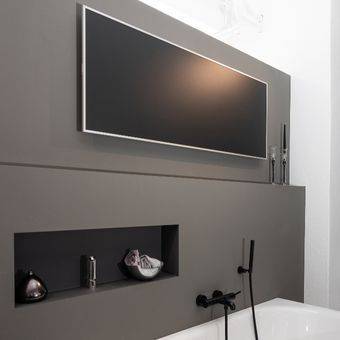
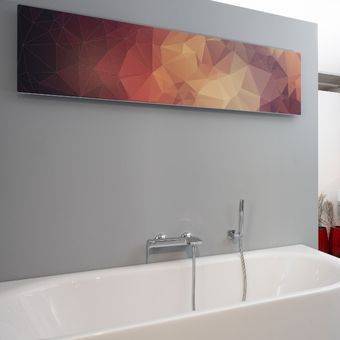
Infrared heating in the bathroom: A sensible heating system?
Do you want to keep your bathroom nice and warm and are looking for an efficient bathroom heating system? There are many options, including infrared heating, which provides a new way of generating and distributing heat. Infrared heaters are known for providing comfortable warmth within a short time. In a wide variety of designs, as infrared mirror heaters or towel radiators, infrared heaters are practical 2-in-1 solutions that take up little space. Does infrared heating make sense for use in the bathroom? We will answer this question in this article.
Advantages of infrared in the bathroom
One of the most important advantages of infrared heating is that it heats up the room quickly. Unlike conventional heaters, an infrared heater does not heat the air in the room, but objects and walls, which gradually release the heat back into the environment.
Since we only spend time in the bathroom, this quick heating is particularly practical. Without the heating having to run continuously, we feel pleasant warmth after only a short time, even in our own bodies. Who wants to be cold for a long time before jumping into the shower?
In addition to the rapid heating of the bathroom, there are other benefits that should not be forgotten. Infrared heaters prevent mould growth. Bathrooms in particular often have high humidity, which often leads to mould. In a bathroom without windows, infrared heating is worth its weight in gold.
Another decisive advantage is that with infrared heating there is only a small loss of heat when ventilating. Since an infrared heater does not primarily heat the air in the room, the room loses very little heat when ventilated. As we already know, it is the objects and walls that reliably store the heat.
The advantages listed make it clear that infrared heating in the bathroom makes perfect sense.
Further advantages of infrared heating in the bathroom
Simple installation of the infrared heating
Controllable with thermostat
Warmed like the sun
Space-saving heating solution (ceiling or wall mounting)
Infrared heating in the bathroom as main or additional heating?
Both are possible. Whether you use an infrared panel in the bathroom as an additional heat source or as the sole heat source, the heater heats the bathroom reliably. Both variants are optimally suited for the bathroom.
The different versions: Towel holder, mirror & picture
Have you decided on an infrared heater? Since infrared heaters are available in numerous designs, it is up to you which design moves into your bathroom. There are various options to choose from, which we present to you in the following.
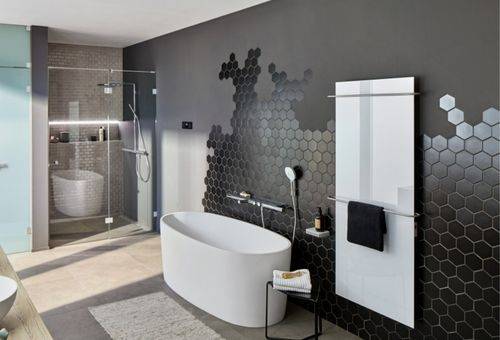
Infrared towel radiator
Infrared towel radiators are extremely popular. The practical 2-in-1 solution not only ensures that the bathroom is at a pleasant temperature. At the same time, this variant gently dries your wet towels and textiles of choice. If you don't want to do without drying yourself with a cosy warm towel after a shower or bath, a towel radiator is the right choice.
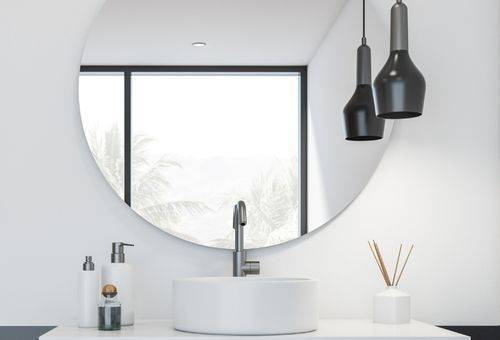
Infrared heating mirror
Another option is an infrared mirror heater - a perfect combination of heater and mirror that is often not recognised as a heater. The special feature of this variant is that the mirror does not fog up despite high humidity. This means you always have a perfect view without having to wipe the mirror surface clean and air the bathroom.
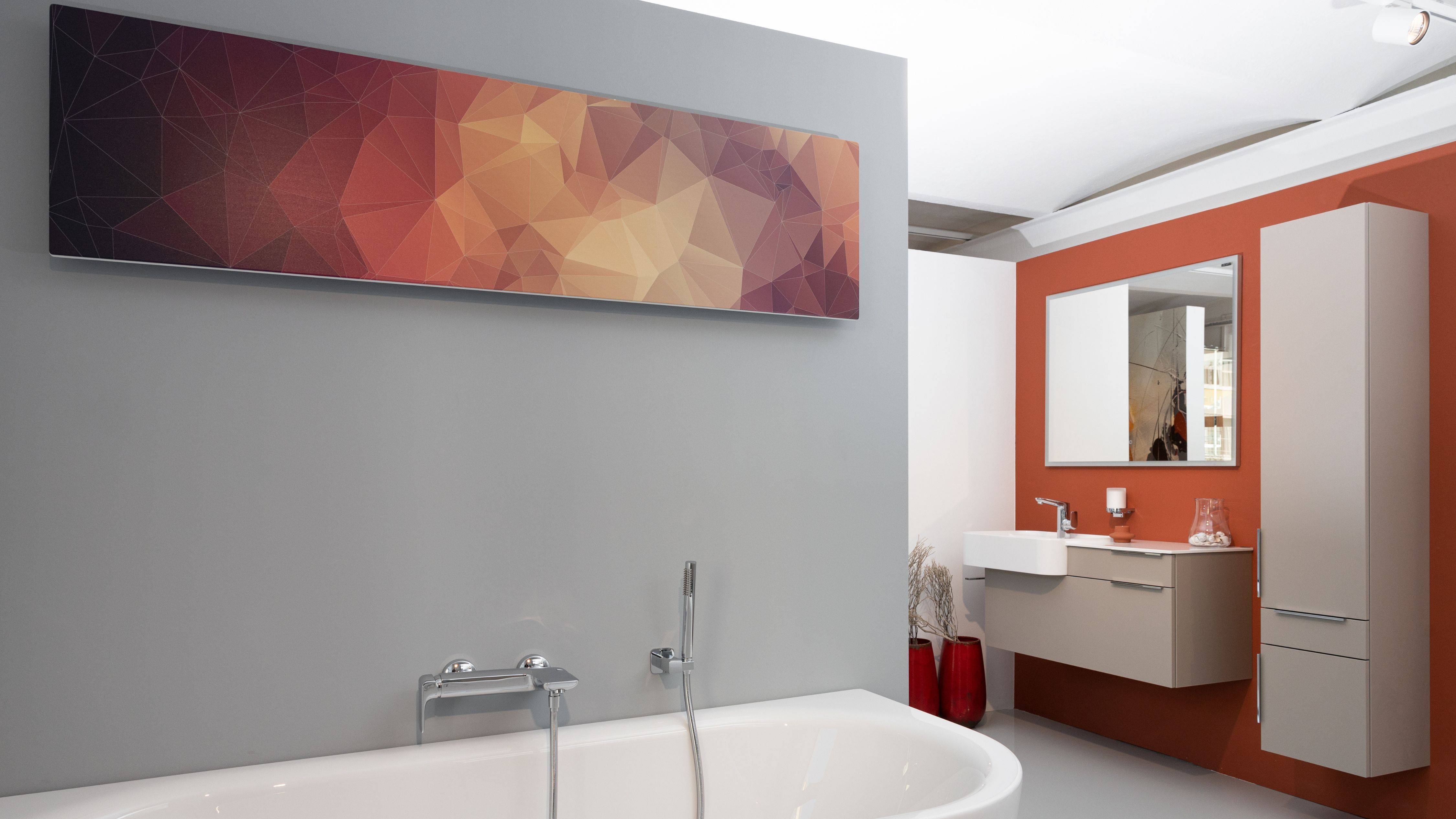
Infrared picture heater
In addition, you can choose from a decorative picture heater. Another way to integrate a heating system inconspicuously into your bathroom. Heating and stylish living accessory in one, it doesn't get much better than that. You often don't recognise the picture heater as a heater, but only as a decorative picture.
Ceiling and wall mounting possible
Each variant in itself is a great way to get warmth into the bathroom in a space-saving way. And the best thing is that infrared heaters can be mounted on the wall as well as on the ceiling. If there is not enough wall space in your bathroom for a wall heater, simply opt for an infrared ceiling heater. Place the infrared heater exactly where you want it. However, follow the recommendation and make sure that it is not mounted directly above the bathtub or shower. It is strongly discouraged to install electrical installations above wet areas. If you opt for ceiling-mounted infrared heating in the bathroom, there is the option of infrared heating with light. This variant combines lighting with heating and eliminates the need for a ceiling light in the bathroom.
You are not sure whether wall or ceiling mounting is the right choice for you? We will show you some points that will help you make the right decision.
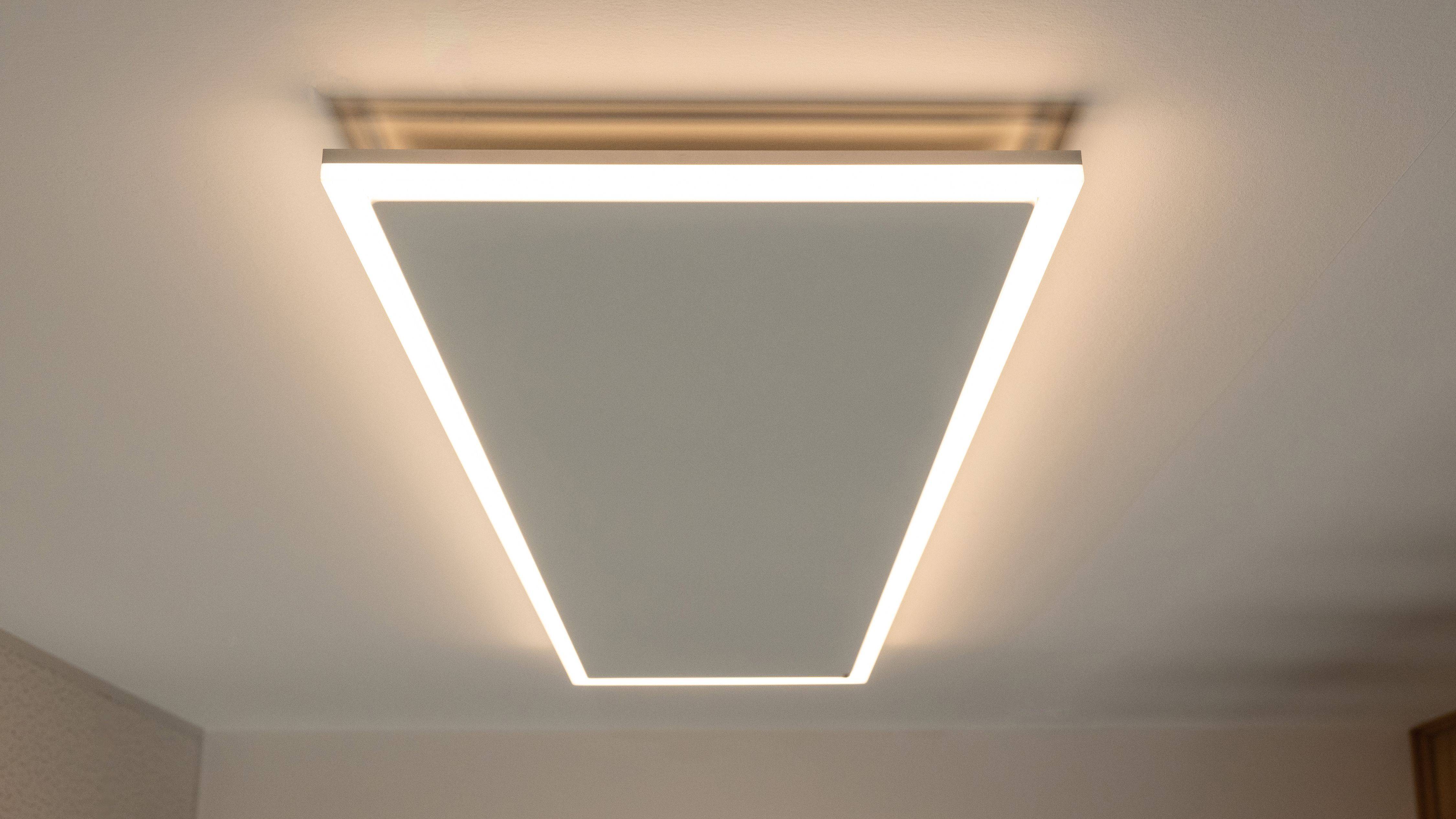
Ceiling mounting
An infrared heater on the ceiling is unobtrusive and space-saving. In addition, the heat is absorbed quickly because the rays first hit the head, which is well supplied with blood. With a ceiling-mounted model, it is important to ensure that the heater has a protection class of IP X4 or IP X5. This means that the model is protected against splashes and jets of water.

Wall mounting
A wall-mounted model is best placed directly opposite the wet area. The infrared rays envelop you in pleasant warmth directly after a shower or bath. You can thus avoid an unpleasant cold after a warm shower. Please note that the heater should not be installed opposite a window, as glass does not store heat. Overall, it is recommended that you align the wall infrared heater where you spend time in the bathroom and where you like it to be warm.
To buy infrared heating for the bathroom or not?
It is up to you to decide whether infrared heating is the right solution for your bathroom. There are many aspects that play a role when buying an infrared heater. We have summarised the most important points once again to support you in your purchase decision:
Infrared heaters spread a pleasant & healthy warmth
Very space saving
Mirror and picture heating are hardly recognised as heaters
Infrared heaters help to prevent mould
They are ideally suited as both supplementary and main heating in the bathroom
Quick & easy assembly
Low acquisition costs















